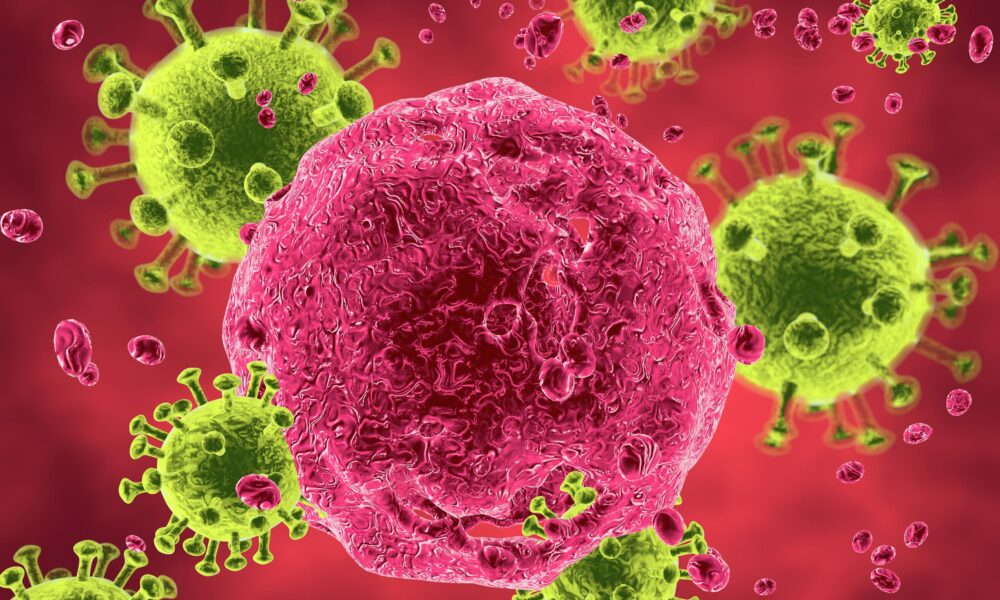At the 2022 Conference for Retroviruses and Opportunistic Infections, Yvonne Bryson, an infectious disease researcher and professor at the University of California at Los Angeles, announced that a woman of mixed race had been cured of human immunodeficiency virus (HIV). After undergoing an umbilical cord stem cell transplant to treat her leukemia, the patient exhibited signs of HIV remission. Scientists are hopeful that this research on umbilical cord stem cells could shed light on a potential cure for HIV.
HIV attacks the body’s immune system and, when left untreated, often leads to acquired immunodeficiency syndrome (AIDS). There is currently no cure for HIV. The available antiretroviral therapy (ART) is, however, very effective at preventing the development of AIDS. This form of treatment stops the virus from multiplying in the body and reduces the viral load to very low amounts, making the virus virtually undetectable and impossible to transmit.
“ART does not cure the person, since the virus remains archived in the body and will re-emerge if treatment is discontinued or interrupted or if drug resistance develops,” Dr. Bluma Brenner, an assistant professor in McGill’s Faculty of Surgery and an affiliated member of the McGill AIDS Centre, wrote in an email to The McGill Tribune.
Although effective, ART has its flaws—according to the WHO, 27 per cent of those diagnosed with HIV could not access the treatment in 2020 Ideally, ART would be made more accessible and affordable until there is a surefire cure and roadmap to solving the HIV crisis.
The eye-catching term “cured” has been used extensively in the media coverage of this recent story, garnering widespread attention. In this case, to be cured of HIV meant that the patient stopped ART and remained in remission. Disease remission is characterized by a decrease or disappearance of symptoms. This woman is the third person reported to be cured of HIV, but remains under the watchful eye of physicians as remission relapse is possible.
“The only [other] cases of HIV cure were the Berlin and London cases, [which] were isolated cases where individuals with cancer received whole body irradiation and who received stem cell transplants,” Brenner wrote.
These two individuals were both recipients of bone marrow transplants containing genetic mutations capable of stopping HIV’s viral entry into the body. However, this type of treatment is invasive and can have terrible side effects such as graft versus host disease, where the recipient’s body is attacked by donor cells. Umbilical stem cell transplants, in comparison, are less intrusive and therefore less likely to cause lasting damage. After the collection of donor cells, the recipient receives an intravenous injection containing the stem cells. Umbilical stem cells work similarly to bone marrow ones by blocking HIV’s entry into the host’s cells, which stops the disease from progressing. Why these umbilical stem cells work so well is still unclear.
The patient’s recovery was remarkably smooth after the stem cell transplant, making her a novelty amongst those cured of HIV and rendering umbilical stem cells that much more of an attractive option to researchers looking for cures. In addition to her health rebound, she is also the only woman and person of mixed race to be cured of HIV with stem cells—two firsts that could be significant for researchers when investigating a cure.
Her biological sex and race are important because there are very few HIV trials that include women at all, let alone women of mixed race. Fifty-three per cent of HIV patients worldwide are women, and of these women, most are non-white. The disease is especially prevalent in developing countries due to systemic factors such as poverty, lack of access to health-care services, and lack of information on the prevention of spread. Many of these HIV patients are also at a much higher risk of developing AIDS because of compromised immune systems from prior infections. To understand how the disease could be treated universally, it is vital that people of diverse backgrounds are included in cure trials.
A cure must work for everyone, regardless of race or biological sex, to bring an end to the HIV/AIDS crisis. That being said, it is unlikely that umbilical cord stem cells will be the be-all, end-all cure: Several unavoidable factors complicate the cure, such as ethical issues regarding the acquisition of umbilical cord blood, the overall cost of stem cell transplants, and the complex task of finding the right donor.
So, while this case is indeed important scientifically, it is perhaps too specific to a particular set of conditions to inspire a universal umbilical stem-cell cure. But as always, more research needs to be done.
“One needs to have a cautionary note,” Brenner wrote. “There was a Boston patient and a Minnesota patient who had [a] similar treatment, underwent remission, and experienced viral rebound.”
Although the news of this cured woman is boosting morale amongst the HIV-affected community, a universal cure still seems far out of reach. According to Brenner, it is not possible to use umbilical stem cells to treat all HIV patients.
“The mass media loves the magic bullet, the instant cure,” Brenner wrote. “There is no HIV vaccine in the foreseeable future.”










Hi… I would like to know more about the future correspondence with regards to HIV cure as I am also affected directly by it and can not wait to be free from this virus.